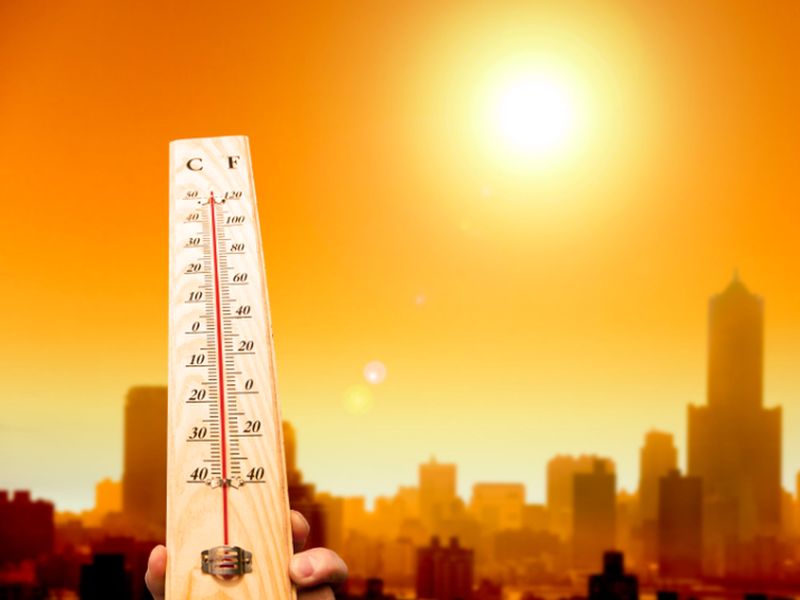
Summer is here and with rising temperature, it’s the unbearable weather condition that can harm you and bring a lot of diseases. In central Asia, Summer (from April to September) is the hottest season of the year. Heat is something that affects the whole body, including skin, eyes, and gastric system if precautions are not taken. Here are some of the most common illnesses in summer and tips to avoid them.
1: Heatstroke/Sun stroke
Heatstroke is a common problem during summer that results from prolonged exposure to high temperatures. It is preceded by symptoms like headaches, dizziness and weakness and results in unconsciousness, organ failure and eventually death. To treat hyperthermia outside is by cooling the body with the help of water, cold air or ice packs. You can also do cooling internally by flushing the stomach with cold drinks.
2: Food poisoning
The most common summer disease is food poisoning. Which is caused by contaminated food or water. The warm and humid weather provides a fertile environment for bacterial growth to contaminate the food. It manifests by bacteria, viruses, and chemicals that post entering the human body cause the onset of gastric problems like diarrhoea, nausea, or vomiting.
3: Dehydration
One of the most common problems that occur in hot weather, is when water intake does not compensate for the water loss. During summers, without realizing we tend to lose a lot of water and salts in the form of sweat. This needs to be replenished for the normal functioning of the body.
4: Mumps
Another common disease in the summer is mumps. It is an extremely contagious viral disease. It is known to occur mainly in children during peak summer. It can be transmitted when an infected person sneezes or coughs into neighbouring people. It affects the parotid gland in front of the ears causing severe swelling, pain, and fever.
5: Chicken Pox
A common summer disease. Common symptoms include scabs, blisters, itchy skin, redness, high-grade fever, loss of appetite, and headache.
6: Measles
This common summer disease is a contagious respiratory infection caused by a virus. Its initial symptoms include high fever, cough, runny nose, sore throat, and red eyes. These symptoms later progress to measles rash, fever, cough, runny nose, and tiny white spots within the mouth. The rashes are seen near the hair margins and face in most cases.
7: Typhoid
It is a water-borne disease transmitted through the orofecal route. Its common symptoms include continuous high fever, fatigue, weakness, abdominal pain, headache, and loss of appetite.
8: Sunburn
Sunburn is caused by ultraviolet (UV) rays from the sun that damage your skin cells. Overexposure to harmful ultra-violet radiation may lead to painful rashes on the skin.
9: Prickly heat
Prickly heat is a skin rash caused by sweat trapped in the skin. It is a red or pink rash usually found on areas of the body that are covered with clothing.
It happens during hot humid weather and is most common in children. Heat rash develops when sweat ducts become narrowed or clogged, looking like dots or tiny pimples on the skin. It often causes discomfort and itching.
10: Other waterborne diseases
Other common summer diseases include diarrhoea, dysentery, and cholera are the most common water-borne diseases.
Tips to avoid common summer diseases.
To keep yourself hydrated drink plenty of water and increase fluid intakes like coconut water, and lemon water, both at home and while travelling. Ensure you have at least 4-5 litters of water in a day.
use loose-fitting, light-coloured clothes while dark coloured clothes absorb more heat and tight clothes do not let your body sweat. Wear light and absorbent materials like cotton.
While travelling or during outdoor activities, avoid direct sun exposure. Seek shade and rest.
Never sit in a car exposed to the hot sun and try to find park your vehicle under the shade.
Apply ice packs and pain relievers for comfort if having sunburns caused due to sun rays.
Wash hands properly and follows general hygiene rules while handling or cooking any food items to prevent water-borne infections.
Wash your hands every time you visit the washroom.
Don’t eat undercooked and street food and avoid eating outside. Eat fresh fruits and vegetables like watermelon, cucumber, sugarcane, and mangoes.
Keep windows closed during the sunny hours like afternoon so that the heat does not get trapped indoors.
To avoid sore eyes and further spread of infection, clean your hands properly, and wash and lubricate your eyes with clean water to ease soreness.
Vaccination with MMR (measles, mumps, rubella) is helpful against infectious diseases. If you or your child are not vaccinated against these 3 infections, vaccinations should be acquired at the earliest.
Apply mosquito repellent and avoid mosquito breeding places.
Keep your skin covered and protected by applying sunscreen.
Common summer diseases occur during the daytime when the sun’s rays are directly perpendicular. Avoid too much exposure to the sun, especially from noon to around 3 pm,
During outdoor activities protect yourself from direct sun heat by wearing a cap along with sunglasses. A hat and sunglasses will prevent you from harmful ultraviolet rays hitting the sensitive areas on your face and will keep your face fresh with healthy skin.
By following these tips, you avoid common summer diseases and ensure you have a healthy and carefree summer.
have a healthy and carefree summer.